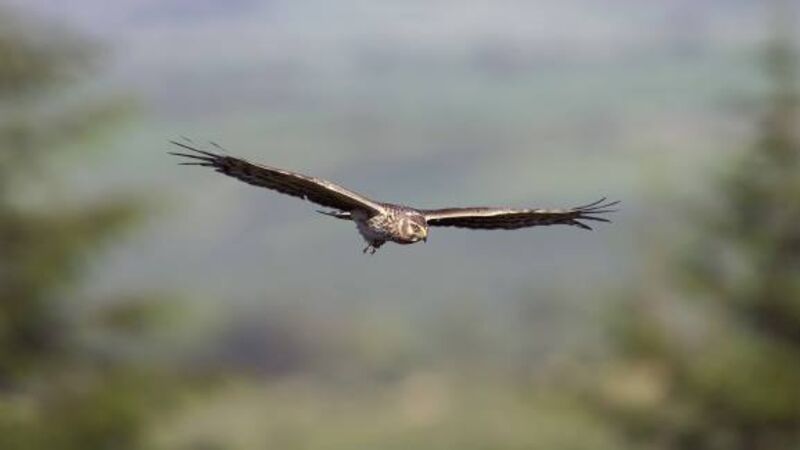Birds of prey on the rise

We often hear how nature will do well, even come back from the brink of extinction, if given a chance and some human help.
Last week came news that the number of surviving hen harrier chicks has gone up 35%. White-tailed sea eagles, reintroduced to this country on a phased basis since 2007, are continuing to breed in the wild and we may see a lot more of them in the coming years.
Many bird species are in decline and the return of birds of prey is one of the only bright lights, according to Allan Mee, head of the white-tailed eagle project.
“We now have probably twice as many birds of prey as we had 30 years ago. Goshawks and red kites are doing well, with the kites being brought to Co Wicklow under a restoration programme. There could be around 100 pairs of red kites here now,” he said.
Of the 100 white-tailed eagles released in Killarney National Park, 40 have died, with about a third poisoned. There has been no confirmed poisoning since 2015 and 40 to 50 birds are still out there. “If there had been no poisonings, we would have a viable population by now,” said Dr Mee.
Giving an update during the annual autumn talks in Killarney National Park, he said that despite the disastrous of effects of Storm Hannah on breeding pairs here, last April, 25 eagle chicks have fledged in recent years. Some eagles have dispersed and have become tourist attractions in places like Glengarriff, Co Cork and Mountshannon, Co Clare.
It takes the eagles up to five years to breed and Dr Mee reckons many of the young birds will have offspring by 2021/22. Pairs usually fail in the first breeding attempt, largely due to inexperience.
Initially, some farmers were apprehensive about the eagle programme, claiming the birds would kill lambs. Such fears were unfounded and some farmers are now helping to monitor eagles’ nests. The eagles feed on fish while a large part of their food comes from eating already dead animals. Many of the poisoned eagles are believed to have died after consuming infected carcases.
Developers of windfarms are asked not to put turbines in flight areas for eagles and hen harriers. In one island in Norway, around 100 eagles were killed in turbine strikes and there have been two recorded deaths of white-tailed eagles from turbines in Ireland.
Once again, the six Killarney National Park talks, held for the 36th year, touched on important, relevant issues and were well supported. Attendances seem to be growing each year, with more than 250 people at some of the talks which were all given by expert speakers.













